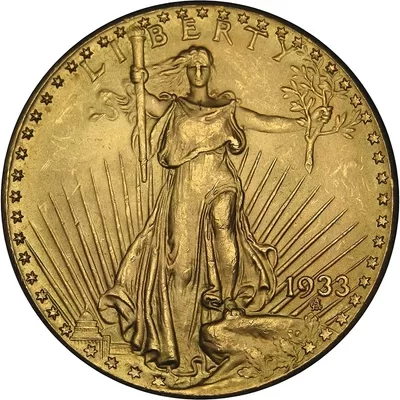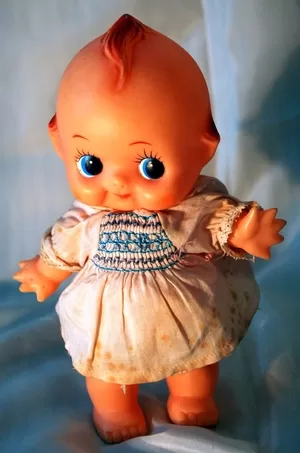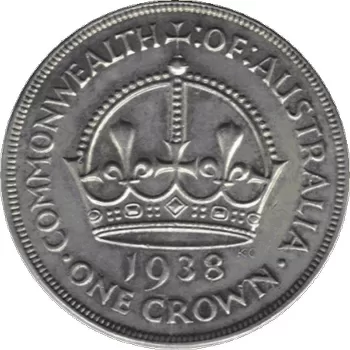The 1933 Augustus Saint-Gaudens Double Eagle Gold Coin, an intriguing numismatic tale, had a unique journey. While approximately 445,000 of these coins were minted in 1933, just months before President Franklin Roosevelt prohibited gold coins from being issued as currency, only one was officially released into circulation. The only other legal example is in the Smithsonian Institute.
King Farouk of Egypt played a pivotal role in the coin’s history. He approached the U.S. Mint, expressing his desire to add a 1933 double eagle to his extensive coin collection.
Since these coins had never entered general circulation, a special export document was issued, allowing the Egyptian king to acquire this numismatic treasure.
An unique “Certificate of Monetization” signed by Mint Director Henrietta Holsman Fore on July 30, 2002 was especially prepared by the Bureau of Engraving and Printing to accompany this coin for King Farouk.
However, the coin’s story took a mysterious turn after the passing of King Farouk and the general who inherited the collection. It disappeared into the possession of an unknown Egyptian, hidden from the world’s view.
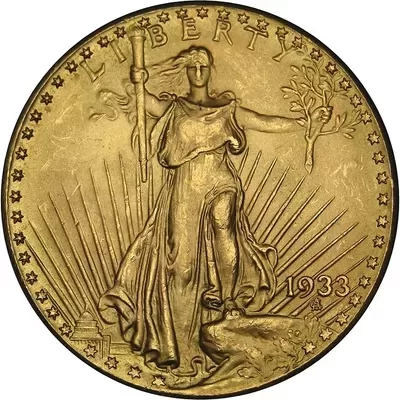

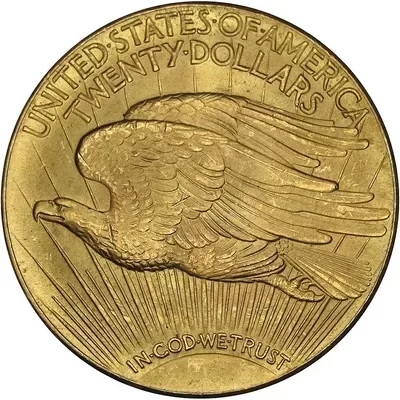

Photo credit: US Mint
The gold coin reappears
In 1996, the coin resurfaced in the possession of renowned British coin dealer Stephen Fenton of Knightsbridge Coins. An attempt to auction the coin led to legal complications when both Fenton and the auctioneer, Jasper Parrino, were arrested, and the coin was seized by the U.S. Secret Service.
The coin found its temporary abode in the vault of the Secret Service, within their World Trade Center office. Legal battles regarding its provenance and ownership ensued. Eventually, the coin was transferred to Fort Knox for safekeeping, only for the World Trade Center to be tragically attacked and destroyed in the same year.
An agreement was reached between Stephen Fenton and the U.S. federal government. The coin, now known as the “Fenton Farouk”, was auctioned in 2002, fetching a remarkable $7,590,000 plus a 10% auctioneer’s premium and an additional $20 for monetization, a world record price for a coin at that time.
The proceeds were divided between Fenton and the government, with the stipulation that any other 1933 double eagles would be seized and not auctioned. As stated by the United States Mint in the July 30, 2002, auction catalogue for this 1933 Double Eagle:
“This is the only 1933 Double Eagle monetized and issued by the United States Mint. It is also the only example that the United States Government has ever authorized, or ever intends to authorize, for private ownership.
“… Any additional examples that may exist are, similarly, property of the United States Government, illegal to own, and subject to seizure.”
United States Mint
2021 auction of the 1933 double eagle
In 2021 the one-of-a-kind gold coin went up for auction at Sotheby’s.
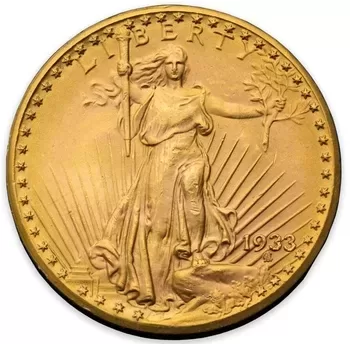

On March 18, 2021, Brett Charville, President of PCGS (Professional Coin Grading Service), conducted a thorough re-examination of the coin at Sotheby’s New York. After meticulous assessment, the coin received an official certification of MS 65 from PCGS, with the certification number 42095232.
Subsequently, on April 7, 2021, John Albanese, associated with Certified Acceptance Corporation (CAC), performed a verification of the 1933 double eagle. It was confirmed to meet the stringent quality standards within its grade, earning the coveted ‘green bean’ designation.
On 9 June 2021, the hammer fell at Sotheby’s and the 1933 double eagle changed hands for a staggering USD $18,872,250 making it the most expensive coin in the world.
Sotheby’s auction notes reads:
Creamy, orange-yellow surfaces with deeply frosted devices and proof-like bloom in the obverse field between the rays. A small semicircular lint mark below Liberty’s left arm, a tiny nick in the fifth ray on the left, a ‘D’-shaped mark on Liberty’s left knee, and minuscule copper-spots to the right of Liberty’s neck and to the right of the T in LIBERTY are identifiers. The reverse exhibits full cartwheel effect.
Some obverse doubling of the stars to the left, the upper part of the torch, and ‘33′ in the date. The reverse exhibits a diagnostic die scratch “traversing the tip of the beak of the eagle” which is also present on the two examples in the Smithsonian.
Eleven more 1933 double eagles found
In 2003, a Philadelphia woman named Joan Switt Langbord discovered eleven (some reports say it was ten) 1933 double eagles in a safe deposit box that had once belonged to her parents. When she sought to appraise them, the United States Treasury seized the coins, claiming they were stolen property.
Investigators alleged that Langbord’s father, Israel Switt, had conspired with a mint clerk to pilfer the coins. Although he had previously faced investigation for the theft, the statute of limitations had prevented prosecution.
Langbord fought to have the coins returned to her, but in July 2011, a federal jury ruled that the stolen coins were rightfully the property of the U.S. government.
What happened to those eleven coins, now worth $120 million dollars? Imagine the job of melting them down! Apparently they are somewhere, being held as chattel.
Only two legal 1933 double eagles remain
The tradition of gold coins as currency in the U.S.A. was ended by Franklin Delano Roosevelt in the early days of 1933 when he abandoned the Gold Standard in 1933. The last American gold coins struck for circulation was 1933 Double Eagles. Only two officially exist, one in the Smithsonian Institute which they call “Our Girl”, and the Fenton Farouk coin.
Further Reading
Pirate Guide to Collecting Australian Coins: 2023/2024 Edition, November 2, 2023 by Damian Walker
Renniks Australian Coin & Banknote Values 31st Edition Hardcover
A Guide Book of United States Coins 2022 75th Edition Spiral-bound by Garrett, Jeff, Bowers
Paper Money – North America – Australia – Oceania: COLOR PHOTOGRAPHY Paper money – Old and Rare Banknote (Banknotes of the world)
Related stories
1794 Flowing Hair silver dollar
Numismatics: Fake Coins to Watch For
Explore the Art of Belly Dancing
Police Ephemera ° The value of Victorian reward posters
‘Central Bank Digital Currency’ is a new digital form of money issued by RBA
What are the world’s largest and famous gold nuggets?

